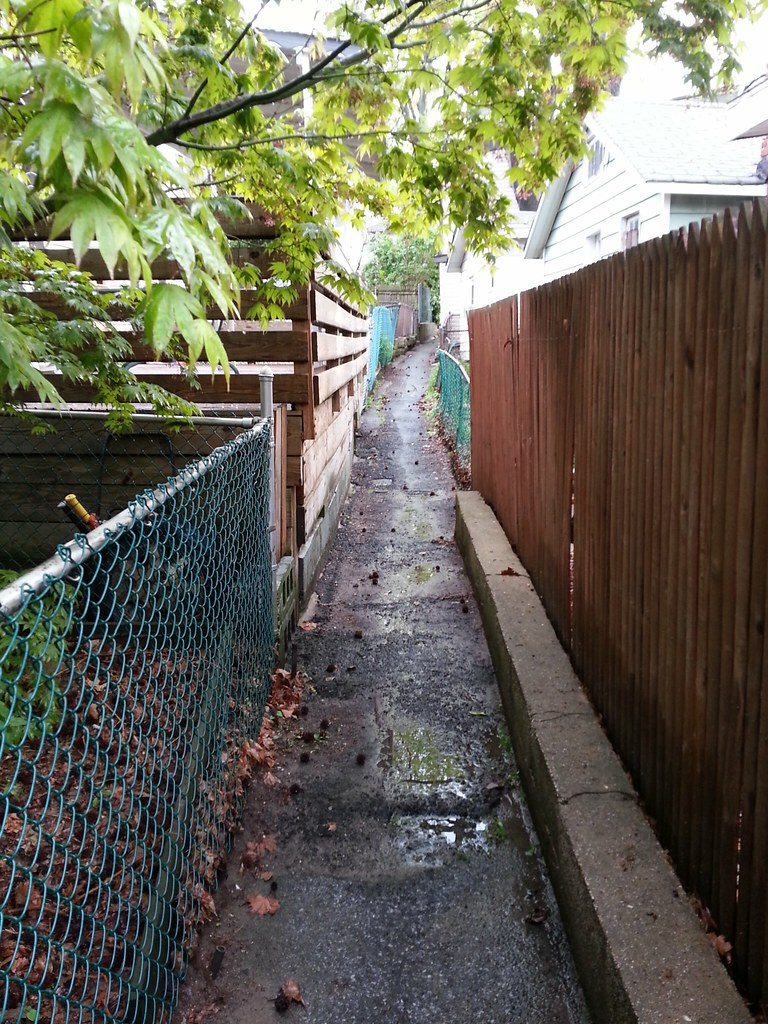
Here we are one last time in Edgewater Park, where there seem to be just as many little pedestrian alleys as there are roads. Some background on the neighborhood from the NY Times:
In 1923, when Richard W. Shaw Sr., the first of four generations of Shaw landlords, bought the property, only one house stood out: a great stone mansion that overlooked pastures, swamps and, of course, the water.
During the summer he permitted church groups, Boy Scouts and, later, workers from New York City to pitch tents or build rustic cottages on what became known as Edgewater Camp.
"As kids, we'd go see cows grazing and then go down to the farmhouses nearby and steal tomatoes and squash," said John McNamara, a 72-year-old Bronx historian and former Edgewater resident, who recalls lazy summers of courting schoolgirls in canoes and walking three miles to the nearest trolley into town.
"We lived in wooden-sided tents with canvas tops," he said. "We had no electricity, just kerosene stoves. It was a real pioneer community."
In the 1930's, the Great Depression forced many of the summer residents to sell their homes in the city. They winterized their Edgewater bungalows with newspapers, cardboard boxes and other crude insulation. A permanent community was born.
For all its scenic beauty, Edgewater is a planner's nightmare, with neither building codes nor zoning laws. Fire hydrants sprout in backyards, a reminder of how the early residents simply ignored the street grid the city had planned for them.
The result is a jumble of 675 single-family houses shoehorned into 55 acres of land, elbowing one another on 30-by-50-foot plots.


